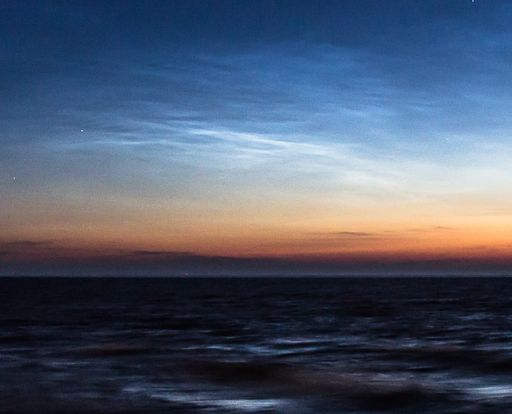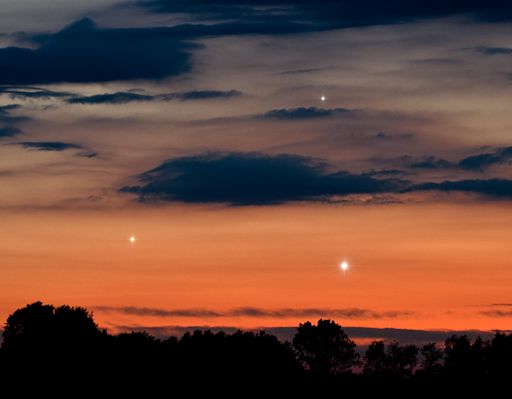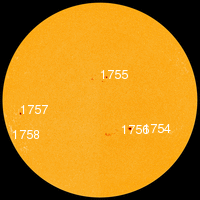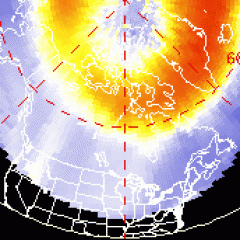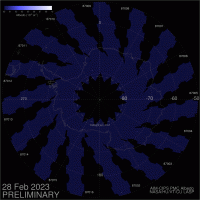Greetings Love Beings, This is Our 3rd day in a Row in Some Intense Solar Wind, we began this With an Over 900 Wind Speed and has remained at close to 700 for the last 2 days, WOW. The Energy Since Our Eclipse and Full Moon Event has Been Increased Tenfold! YEEHAW! WE are Sailing! Enjoy these Energies!
Join us Live Today at 10:30am Pacific as We Share The Bigger Picture!
At this Link:http://tinychat.com/galacticpress
ELECTRON STORM: In the past 24 hours, the flux of high-energy electrons swarming around Earth has increased more than tenfold. The source of this "electron storm" is a 600 km/s stream of solar wind buffeting Earth's magnetic field. NOAA cautions satellite operators that "satellite systems may experience significant charging" in response to accumulated electrons. SWx alerts: text, voice.
NOCTILUCENT CLOUD SEASON BEGINS: Over the weekend, sky watchers in northern Europe and Canada spotted electric-blue tendrils of light reaching out of the western sky at sunset. This signals the beginning of the 2013 season for noctilucent clouds (NLCs). Photographer Silvar Mehik sends this picture from the island of Saaremaa in Estonia:
NLCs are Earth's highest clouds. In the upper atmosphere, 80+ km high, tiny ice crystals nucleate around meteoroids and other aerosols. When the crystals catch the rays of the setting sun, they glow electric blue. For reasons that are not fully understood, these highest and coldest of clouds form during the warmest months on the ground--late spring and summer.
Noctilucent clouds first appeared in the 19th century after the eruption of super-volcano Krakatoa. At the time, people thoght the clouds were caused by the eruption, but long after Krakatoa's ash settled, the clouds remained. In those days, NLCs were a polar phenomenon confined mainly ro far-northern places such as Scandinavia or Alaska. In recent years they have intensified and spread with sightings as far south as Utah and Colorado. Could this be a sign of climate change? A NASA spacecraft named "AIM" is in orbit to investigate.
NEW! Daily images from AIM are now published here on Spaceweather.com. To find them, look in the left column of the home page and scroll down below the coronal holes.
High latitude sky watchers should be alert for NLCs in the evenings ahead. Observing tips: Look west 30 to 60 minutes after sunset when the sun has dipped 6o to 16o below the horizon. If you see luminous blue-white tendrils spreading across the sky, you've probably spotted a noctilucent cloud.
Realtime Noctilucent Cloud Photo Gallery
[previous years: 2003, 2004, 2005, 2006, 2007, 2008, 2009, 2011]
SUNSET PLANET SHOW: Last night, Venus, Jupiter and Mercury converged to form a bright triangle in the sunset sky. "It was an absolutely amazing sunset planet show," says Marek Nikodem, who photographed the apparition from Szubin, Poland:
At closest approach, the three planets fit inside a circle less than 3o wide. It was a rare event. There won't be another triple conjunction this tight until 2026.
However, the show's not over. The triangle will stretch and eventually break apart in the nights ahead--and the contortions are worth watching. Keep an eye on the sunset sky all week long. NASA: video, full story.

![]()
Solar wind
speed: 693.3 km/sec
density: 1.1 protons/cm3
explanation | more data
Updated: Today at 1307 UT
![]()
X-ray Solar Flares
6-hr max: B5 1159 UT May27
24-hr: B8 0211 UT May27
explanation | more data
Updated: Today at: 1300 UT
![]()
![]()
![]()
Daily Sun: 27 May 13
![]()
![]()
None of these magnetically-simple sunspots poses a threat for strong solar flares. Credit: SDO/HMI
![]()
![]()
![]()
Sunspot number: 92
What is the sunspot number?
Updated 27 May 2013
Spotless Days
Current Stretch: 0 days
2013 total: 0 days (0%)
2012 total: 0 days (0%)
2011 total: 2 days (<1%)
2010 total: 51 days (14%)
2009 total: 260 days (71%)
Since 2004: 821 days
Typical Solar Min: 486 days
Update 27 May 2013
The Radio Sun
10.7 cm flux: 120 sfu
explanation | more data
Updated 27 May 2013
![]()
![]()
![]()
Current Auroral Oval:
![]()
![]()
Switch to: Europe, USA, New Zealand, Antarctica
Credit: NOAA/POES
![]()
![]()
![]()
Planetary K-index
Now: Kp= 3 quiet
24-hr max: Kp= 3 quiet
explanation | more data
![]()
Interplanetary Mag. Field
Btotal: 5.3 nT
Bz: 1.3 nT south
explanation | more data
Updated: Today at 1307 UT
![]()
![]()
![]()
Coronal Holes: 27 May 13
![]()
![]()
Solar wind flowing from this coronal hole should hit Earth's magnetic field on June 1-2. Credit: SDO/AIA.
![]()
![]()
NEW: Spaceweather.com is now posting daily satellite images of noctilucent clouds (NLCs), which hover over Earth's poles at the edge of space. The data come from NASA's AIM spacecraft. The north polar "daisy" pictured below is a composite of near-realtime images from AIM assembled by researchers at the University of Colorado's Laboratory for Atmospheric and Space Physics (LASP).
![]() Noctilucent Clouds
Noctilucent Clouds
![]()
![]()
![]()
Switch view: Europe, USA, Asia, Polar
![]()
Updated at: 05-25-2013 14:55:02

